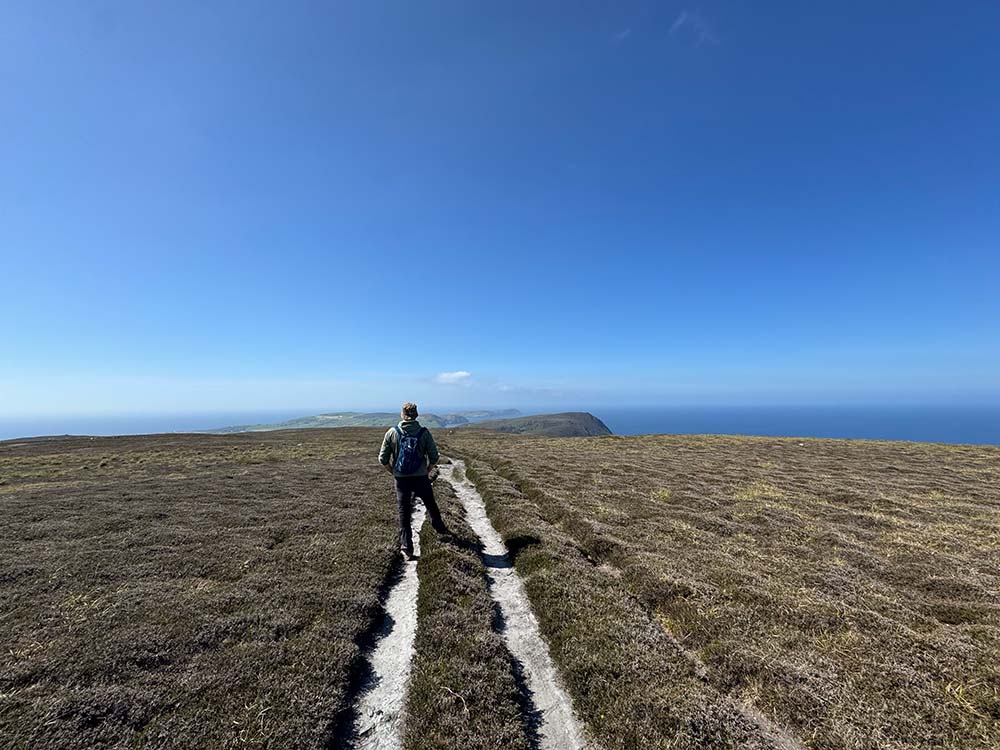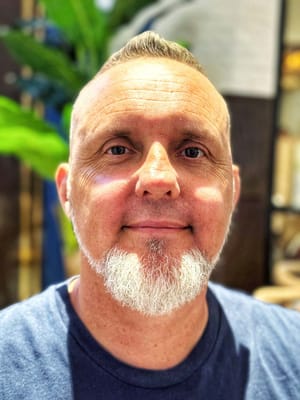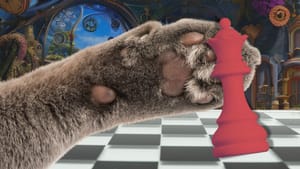A few years ago, while on a consulting job, I sat alone in a quiet room with no phone, no distractions. Just me, a chair, and the silence. I told myself it was part of my mindfulness practice, a way to slow down. But within minutes, my legs twitched, my fingers fidgeting toward where my phone should have been. My thoughts sped up. My chest tightened. And something inside me, something I couldn't name, wanted to run.
I'd spent decades in martial arts dojos and mindfulness circles. I thought I knew how to be still. But that day, stripped of stimulation, I was forced to confront a hard truth: I didn't really know how to be alone with myself.
In a world obsessed with the self: endless self-expression, self-branding, self-care. It's ironic how many of us will do almost anything to avoid being left with ourselves. We distract, scroll, hustle, drink, work, and optimise. Anything to stay busy. Anything to avoid that quiet space where nothing stands between us and the raw material of our lives.
When Silence Becomes Unbearable
There's a study I often come back to, a simple experiment by social psychologist Timothy Wilson. Participants were placed alone in a room for just 6 to 15 minutes, asked to do nothing but think. The results were sobering: over half disliked the experience, calling it boring. Even more shocking? When given the option to administer a mild electric shock rather than sit with their own thoughts, 67% of men and 25% of women chose pain over stillness.
Let that sink in: many of us would rather hurt ourselves than face what lives in our own minds.
But is it really boredom we fear? Or is it something deeper?
I don't think all of it is boredom. It's the confrontation with the unresolved. The grief we buried, the regrets we pretend don't matter, the insecurities we cover with performance and productivity. In stillness, the mask slips. The roles vanish. What remains is you. And for many of us, that ‘you’ has become a stranger.
We've built a culture that celebrates the individual while systematically disconnecting us from ourselves. Our devices vibrate with dopamine, and our days blur into screens. The moment we sense discomfort rising, we reach for something to numb it. But each act of distraction is a missed encounter with the inner world, an opportunity to grow, that we sidestep.
The Dance Between Solitude and Connection
There's a difference between solitude and loneliness. Loneliness is a hunger for connection. Solitude, when chosen with intention, is the sacred space where reconnection begins. But these aren't fixed states. They exist in a continuous dialogue.
I've noticed something surprising: my capacity for meaningful connection deepens after periods of genuine solitude. And conversely, rich connections with others can prepare me for more profound solitude. They aren't opposing forces but complementary rhythms. We need both.
Thoreau understood this. In Walden, he retreated to the woods not to escape people, but to find himself. "I went to the woods," he wrote, "because I wished to live deliberately." He believed the noise of society clouded our ability to know what truly matters. In solitude, the dust settles. Things sharpen. You begin to hear what you couldn't hear before, your own voice.
Yet Thoreau's experience isn't universal. Indigenous traditions across the Americas, Africa, and Australia have long practised intentional solitude within deeply communal contexts. Vision quests and walkabouts exist alongside strong community bonds. In Japanese philosophy, ma (間) captures the productive emptiness between things. Daoist traditions speak of wei wu wei, action through non-action. These diverse wisdom traditions suggest our individual struggles with solitude connect to something universal yet culturally textured.
That's been true for me too. Some of my clearest insights have come not from busy cafés or group workshops but from walking alone along the coastal paths of the Isle of Man, the sea to my right, and the wind in my face. In those moments, something quiet returns. Not always peace, but presence. A soft, steady awareness that reminds me I'm still here.

Conversing with Silence
When was the last time you experienced silence not as an absence but as a presence? Not as a void to be filled, but as a conversation partner?
I've learned that silence isn't empty. It's full. Full of what we normally can't hear beneath the noise. In true silence, I've met parts of myself I'd been avoiding for years: the grieving child, the uncertain teacher, the aging man confronting mortality. These encounters aren't always comfortable, but they're necessary. They're how we become whole.
I invite you to consider: What would it be like to approach silence as a relationship rather than a condition? What might silence be trying to tell you?
The Gentle Terror of Zazen
I've been exploring Zen practice for some time now, and it has stripped away many of my illusions. Zazen, just sitting, is deceptively simple. You sit. You breathe. You stay. And then your mind erupts with noise: self-doubt, restlessness, unresolved emotion. There are no mantras to distract you, no guided voice to reassure you. Just you, sitting in the fire of your own presence.
At first, it felt like I was doing something wrong. I expected peace and instead found irritation. But over time, I began to understand that this is the work. To remain. To soften. To not flinch when discomfort rises. Zazen has become for me a training ground for life. A place where I can practice staying with what I normally run from.
The wisdom that emerges through stillness differs profoundly from what I access through movement. In my martial arts practice, knowledge emerges through the body's intelligence, reactive, intuitive, flowing. When I spar, I learn about boundaries, resilience, and adaptability. When I sit in zazen, different truths emerge, about impermanence, about the constructed nature of identity, about the space between thoughts.
We need both forms of embodied wisdom. The body in motion reveals certain truths; the body in stillness reveals others. The integration of these knowing ways creates a fuller understanding than either could alone.
It's not about fixing anything. It's about learning to be with what is.
The Sacred Gift of Boredom
Boredom gets a bad rap in the modern world. We treat it like a virus to be cured, yet it might be one of the last remaining gateways to insight.
I've learned to sit with boredom, to let it stretch and ache a little. And often, just beyond that initial discomfort, something opens. My mind starts to wander, but not aimlessly. It sifts through old memories, connects dots I didn't know were related, surfaces fragments of truth I hadn't made time to feel. Some of my most creative ideas, my most honest revelations, came not from trying harder, but from letting go.
There's even research to back this up. Dr. Sandi Mann found that boredom can boost creativity and problem-solving. When our brains shift into ‘default mode,’ we begin to access deeper layers of thought. In other words, boredom doesn't dull the mind, it frees it.
But only if we're willing to stay with it.
Reimagining Our Relationship with Time
Our avoidance of solitude is intimately connected to our relationship with time. Modern life operates in what philosopher Byung-Chul Han calls ‘hypertime,’ accelerated, fragmented, achievement-oriented time that leaves no space for contemplative experience.
When I practice intentional solitude, something shifts temporally. I move from clock time to lived time. Minutes stretch. The artificial urgency that governs most of my day dissolves. I rediscover what the ancient Greeks called kairos, the right or opportune moment, as distinct from chronos, sequential time.
This temporal shift changes how I experience myself. Instead of being a collection of tasks and deadlines, I become present to the unfolding moment. The question becomes: how might you create small pockets of different time in your daily life? Where could chronos give way to kairos, even briefly?
Transhumanism and the Technological Escape
Along with my thoughts in this article, I have also been reflecting on the rise of transhumanism: the belief that we can and should use technology to enhance or transcend human limitations. In many ways, it's an understandable dream: eliminate suffering, upgrade cognition, optimise everything.
But I wonder, at what cost?
What happens if we bypass the very discomfort that teaches us how to live wisely? What if, in editing out our fears, doubts, and sadness, we also delete our depth? Our poetry? Our soul?
Transhumanism may promise perfection, but lived philosophy reminds me that it's our imperfections that shape us. It's sitting with grief, navigating confusion, making peace with the unresolved that brings maturity. No app can do that for you. No implant can fast-track presence. The human condition isn't a bug to fix. It's a mystery to be lived.
Our growing reliance on technology is at the heart of our disconnection from ourselves. Our devices haven't enhanced our humanity; they've fractured our attention, commodified our relationships, and inserted endless barriers between us and direct experience. Each notification, each scroll, each digital dopamine hit pulls us further from the wisdom that silence offers.
This isn't about nostalgia for an analog past. It's about recognising that the technological solutions we've embraced to solve human problems have created new, deeper ones. The more we outsource our thinking, our memory, our emotional regulation to digital tools, the more we atrophy our innate capacities for presence.
Perhaps the radical act isn't finding better ways to use technology, but finding the courage to use it less. To create boundaries. To reclaim the silence that devices have stolen. To remember what it means to be human without digital mediation.
Practical Practices for Coming Home
The path back to myself hasn't been dramatic. It's been quiet, unglamorous, and full of small, hard-won choices.
Every morning, I take twenty minutes just to sit. No phone. No doing. Just breath, presence, and whatever wants to arise. Some days, it's uncomfortable. Some days, it's sweet. But either way, it's real.
I've also begun walking again, not for fitness, but for soulfulness. I wander the same streets I used to rush through, but now I let them speak to me. A fallen leaf. A stranger's smile. The echo of my own footsteps. These small moments become mirrors.
The setting matters profoundly. Walking in urban environments offers different wisdom than natural settings. The city confronts me with human creativity, social structures, the evidence of collective choices. Nature reminds me of larger cycles, of time beyond human scale, of my small but significant place in the web of life. Both offer valuable insights when approached with presence.
And yes, I still wrestle with the urge to distract. I'm not a monk. I'm human. But I've learned that staying, even for just a few extra breaths, opens a doorway. One I no longer wish to close.
I turn off notifications. I give myself the gift of silence. I make space for journaling. And when an old emotion rises, I let it speak. I don't push it away. Because the more I listen inward, the less I need to chase answers outward.
These practices have concrete effects. After committing to regular solitude, I noticed my teaching became more authentic. I stopped using busyness as a measure of worth. I made a difficult but necessary career transition I'd been avoiding for years. And perhaps most significantly, my relationships deepened. Presence with myself translates to presence with others.
The Complexity of Resistance
It's worth acknowledging that our resistance to solitude isn't always simple avoidance. For those carrying trauma, being alone with one's thoughts can feel dangerous rather than restorative. The brain's protective mechanisms might be acting with wisdom when they steer us toward distraction.
This doesn't mean abandoning the practice of solitude, but it does suggest approaching it with kindness rather than judgment. Maybe we begin with brief moments. Maybe we find support, a therapist, a community, or a structured practice.
The path to presence isn't always linear.
I invite you to consider: What might your specific resistance to solitude be protecting? What small, manageable step toward presence feels possible for you today?
Collective Wisdom Through Individual Practice
While solitude appears deeply personal, it connects to our collective experience. When we practice being alone with ourselves, we're participating in a tradition that spans cultures and centuries. We're engaging with questions that have animated human life since its beginning: Who am I when no one is watching? What matters beyond achievement and approval? What does it mean to be fully human?
These personal practices can ripple outward. The person who has faced themselves in silence brings a different quality to their community, more authenticity, less reactivity, greater capacity to hold complexity without rushing to judgment.
In my own life, regular solitude has made me a better listener, more attuned to what's happening beneath the surface in group settings. It's enabled me to stay present during conflict rather than withdrawing or escalating. These are small but meaningful contributions to the communities I'm part of.
The Courage to Stay
In a culture that rewards action, stillness is an act of rebellion. In a world addicted to noise, choosing solitude is radical. And in a society that tells us to fix, hack, and optimise ourselves, the bravest thing we can do is to stop, breathe, and feel. To be Unoptimised.
Solitude won't solve all our problems. But it will reveal which ones are real. It will show us who we've become, and who we still might be.
The work isn't always easy. But it's honest. It's human. And it's necessary.
Because the person you've been avoiding, the one who shows up in the silence, might just be the person you've been looking for all along.
What would happen if you sat with yourself, just as you are, for five minutes today? Not to improve or analyse, but to listen. What might you hear that you've been too busy to notice?





Member discussion